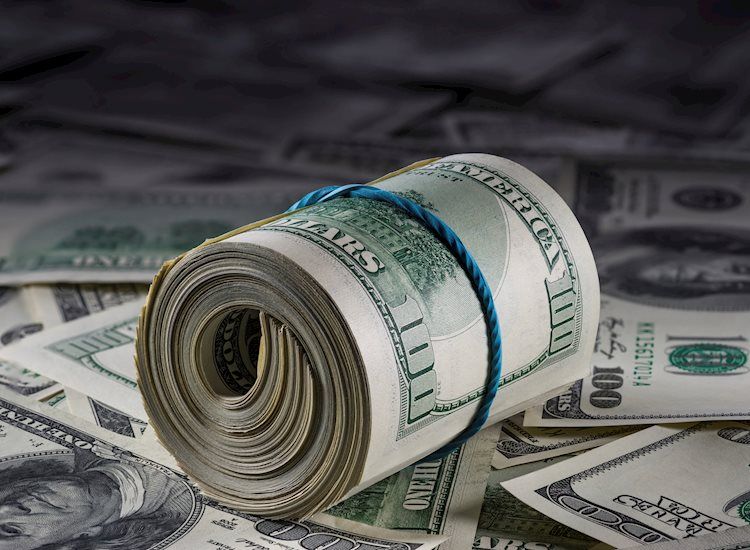
- DXY trades near 106.80 on Tuesday.
- Market focus shifts toward upcoming Fed decision on Wednesday.
- Retail Sales fail to boost US Dollar enthusiasm.
The US Dollar Index (DXY), which measures the value of the USD against a basket of currencies, trades with gains around 106.80 on Tuesday, as upward momentum stalls following November’s Retail Sales release. Market focus remains on Wednesday’s decision on interest rates by the Federal Reserve (Fed), and a 25 bps cut is already priced in.
Daily digest market movers: US Dollar stuck as markets assess Retail Sales figures
- The two-day Federal Open Market Committee meeting begins on Tuesday as economic fundamentals suggest the Federal Reserve should not cut rates.
- November Retail Sales data slightly exceeded forecasts but failed to spark renewed US Dollar buying, traders weigh the marginal revisions and mixed underlying details.
- Monthly Retail Sales grew by 0.7%, beating the 0.5% estimate, while the previous print got revised up to 0.5% from 0.4%.
- Growth remains solid: The New York Fed’s Nowcast model tracks Q4 growth at 1.9% SAAR, while the Atlanta Fed GDPNow stands at 3.3%.
- Markets still anticipate a 25-basis-point rate cut on Wednesday, priced at over 95% probability, even as economic data challenge the need for immediate easing.
DXY technical outlook: Indicators improve, but upside momentum fades
US Dollar indicators recovered significant ground last week, yet the index lacks the strength to retest the 107.00–108.00 zone. On Monday, the index pulled back. Although it trades near 106.30 on Tuesday, the overall picture remains constructive if it can stay above its 20-day Simple Moving Average (SMA).
Persistent growth and upbeat US data may keep the Greenback supported, but caution is warranted until a decisive break above near-term resistance levels is seen.
Central banks FAQs
Central Banks have a key mandate which is making sure that there is price stability in a country or region. Economies are constantly facing inflation or deflation when prices for certain goods and services are fluctuating. Constant rising prices for the same goods means inflation, constant lowered prices for the same goods means deflation. It is the task of the central bank to keep the demand in line by tweaking its policy rate. For the biggest central banks like the US Federal Reserve (Fed), the European Central Bank (ECB) or the Bank of England (BoE), the mandate is to keep inflation close to 2%.
A central bank has one important tool at its disposal to get inflation higher or lower, and that is by tweaking its benchmark policy rate, commonly known as interest rate. On pre-communicated moments, the central bank will issue a statement with its policy rate and provide additional reasoning on why it is either remaining or changing (cutting or hiking) it. Local banks will adjust their savings and lending rates accordingly, which in turn will make it either harder or easier for people to earn on their savings or for companies to take out loans and make investments in their businesses. When the central bank hikes interest rates substantially, this is called monetary tightening. When it is cutting its benchmark rate, it is called monetary easing.
A central bank is often politically independent. Members of the central bank policy board are passing through a series of panels and hearings before being appointed to a policy board seat. Each member in that board often has a certain conviction on how the central bank should control inflation and the subsequent monetary policy. Members that want a very loose monetary policy, with low rates and cheap lending, to boost the economy substantially while being content to see inflation slightly above 2%, are called ‘doves’. Members that rather want to see higher rates to reward savings and want to keep a lit on inflation at all time are called ‘hawks’ and will not rest until inflation is at or just below 2%.
Normally, there is a chairman or president who leads each meeting, needs to create a consensus between the hawks or doves and has his or her final say when it would come down to a vote split to avoid a 50-50 tie on whether the current policy should be adjusted. The chairman will deliver speeches which often can be followed live, where the current monetary stance and outlook is being communicated. A central bank will try to push forward its monetary policy without triggering violent swings in rates, equities, or its currency. All members of the central bank will channel their stance toward the markets in advance of a policy meeting event. A few days before a policy meeting takes place until the new policy has been communicated, members are forbidden to talk publicly. This is called the blackout period.

